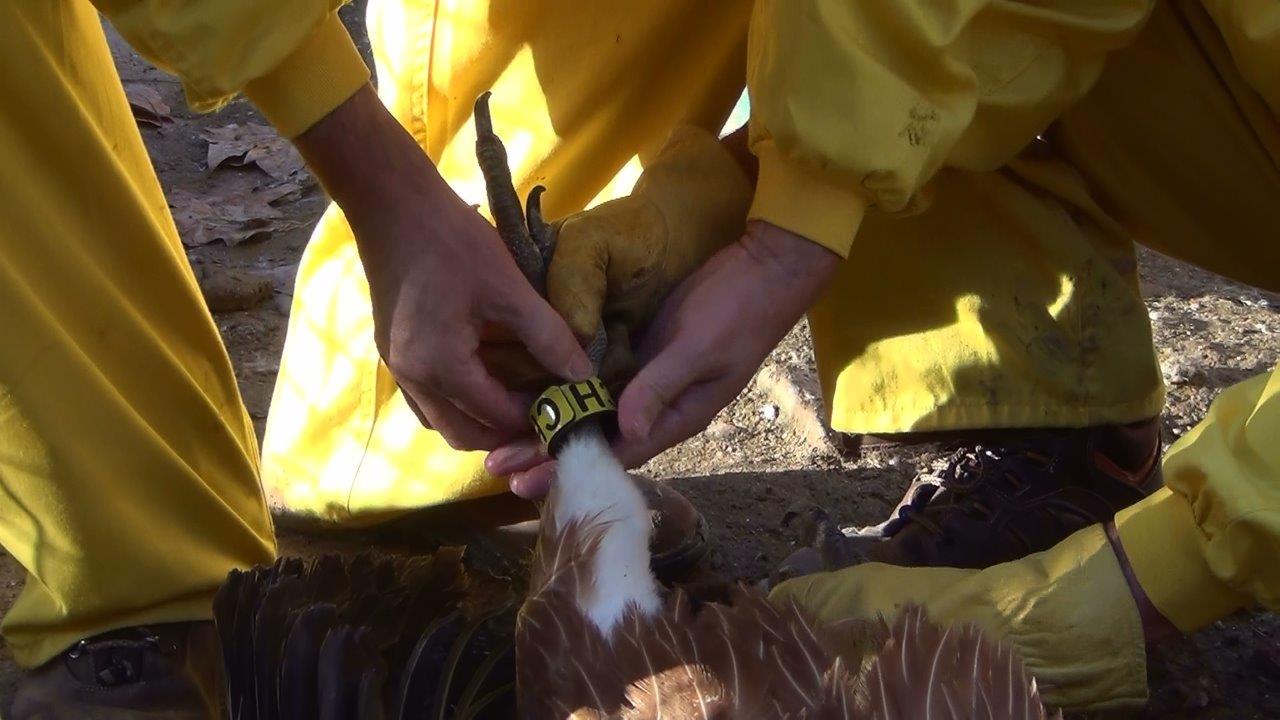Barcelona Zoo has a long experience in breeding birds and has always made efforts to conserve endangered birds - in particular scavengers such as vultures.
In the early 1970s, we developed the first initiative to create artificial feeding areas for vultures, which at that time were quite endangered in our country. A few years later in 1991, five griffon vultures (Gyps fulvus) were sent to Montpellier as part of a reintroduction project led by "Groupe de Recherche et d’Information Sur les Vertebrés" in Cévennes National Park.
This time, our interest in reintroducing new griffon vultures - in conjunction with the recommendations of the European griffon vulture (Gyps fulvus) breeding programme - led us to contact the Vulture Conservation Foundation (VCF). The result of these efforts was the transfer last Thursday of three males to Bulgaria, where a reintroduction project was started in 2009 as part of the European Union’s Life Programme. Over this time, more than 200 birds have been released, 10% of which came from European zoos. The project has been a success, and some of the released birds have even reproduced in a region where the species had become extinct 100 years ago.
The current colony of Barcelona Zoo vultures consists of 12 individuals - eight males, three females and one chick born in 2017 - three of which come from a rescue centre and form part of the current breeding group. The three birds sent to the Bulgaria were born at the Zoo between 2014 and 2015.
Once they had arrived safe and sound at their destination in Bulgaria at the Green Balkans Rescue Centre, the three vultures had their wings marked so that they could be identified in feeding areas as well as in the wild. They will spend time at this centre to acclimatise to the place and so that they accept it as their own territory. Their release will adhere to the soft release method that involves opening the aviary where they are living so that the birds can leave when they want to. The release normally takes place between April and October.
Characteristics and status of the griffon vulture:
The griffon vulture, Gyps fulvus, is a scavenging bird that occupies mountainous areas of Southern Europe and North Africa to Central Asia. They form large breeding colonies on cliffs. At the start of the year, between the end of January and early March, they lay a single white egg which is incubated by both adults for 50-58 days. Each pair breed a single chick per season and it stays in the nest for 110-130 days. The transformation in agriculture and livestock, the use of poisons and hunting reduced their populations in the mid-20th century. It is worth mentioning that more than 80% of the European population is currently found in the Iberian Peninsula, where in recent years their populations have been recovering. In contrast, other European populations of this species have suffered a significant decline, as is the case of the Balkan Peninsula: Bulgaria, Slovenia, Greece.
The European Association of Zoos and Aquaria (EAZA) has a European Breeding Program (ESB) for this species, coordinated by Jerez de la Frontera Zoo.




